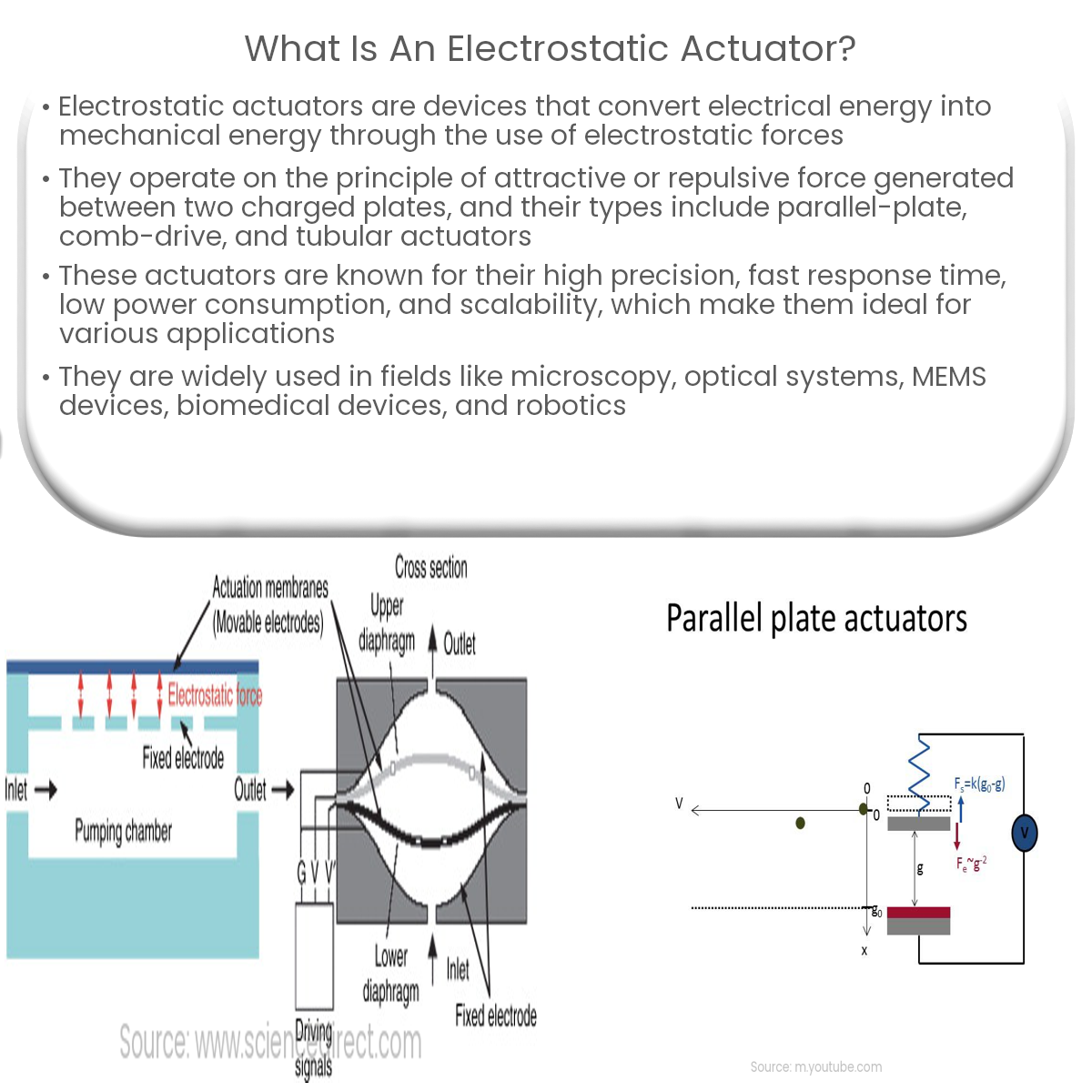An electrostatic actuator converts electrical energy into mechanical energy using electrostatic forces, with applications in MEMS, optics, and robotics.
Introduction to Electrostatic Actuators
An electrostatic actuator is a type of actuator that converts electrical energy into mechanical energy using electrostatic forces. These devices are used in various applications ranging from micro-electromechanical systems (MEMS) to large-scale industrial equipment.
Working Principle
The basic principle behind electrostatic actuators is the attractive or repulsive force generated between two charged plates. When a voltage is applied across these plates, an electric field is created, and the electrostatic force resulting from this field causes the plates to move relative to each other. This movement is then harnessed to perform mechanical work.
Types of Electrostatic Actuators
- Parallel-plate actuators: These actuators consist of two parallel plates separated by a small distance. When a voltage is applied, one plate is attracted towards the other, causing movement.
- Comb-drive actuators: In comb-drive actuators, interdigitated comb-like structures are used instead of parallel plates. The electrostatic force generated between the comb teeth causes the actuator to move.
- Tubular actuators: These actuators have a cylindrical structure, with electrodes placed on the inner and outer surfaces. When voltage is applied, the resulting electrostatic force causes the tube to expand or contract.
Advantages of Electrostatic Actuators
- High precision: Electrostatic actuators can provide extremely precise positioning and movement control, making them ideal for applications requiring high accuracy.
- Fast response time: These actuators can respond quickly to changes in voltage, allowing for rapid movement and control.
- Low power consumption: Due to their electrostatic nature, these actuators consume very little power, making them energy-efficient.
- Scalability: Electrostatic actuators can be easily scaled down for use in MEMS and other microscale applications.
Applications of Electrostatic Actuators
Electrostatic actuators have a wide range of applications in various fields, including:
- Microscopy, where they are used for precise positioning and focusing of microscope stages.
- Optical systems, for controlling the position and orientation of mirrors and lenses.
- MEMS devices, such as accelerometers, gyroscopes, and pressure sensors.
- Biomedical devices, like drug delivery systems and microfluidic devices.
- Robotics, where they are employed for precise control of robotic arms and grippers.


